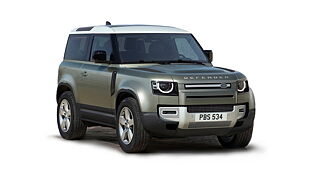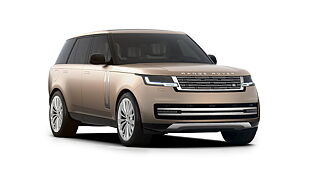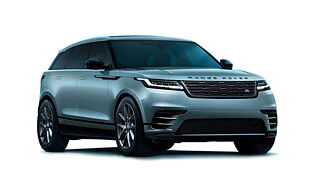What is it?

Why I would buy it? For its range of abilities and appeal
Why I should avoid it? It will be very expensive, big dimensions will make it cumbersome in our ever crowded streets
The full sized Range Rover is an extremely important car for Land Rover. It appeals to the purists and is something that almost every SUV fan dreams of owning. The humungous proportions, luxurious interiors, off-road capability and the huge street presence makes it very desirable. Now, in 2018 this car has got a midlife facelift and the changes are both cosmetic as well as mechanical. The car we had on test was the P400e plug-in hybrid which unfortunately won’t be coming to India anytime soon, thanks to our government´s not being too kind to eco-friendly cars at the moment. So we will focus more on the cosmetic upgrades. We went to the UK countryside to see what it’s like.

At first glance the exterior updates seem minor. But a closer scrutiny reveals a longer hood, a grille that is now made of mesh, slimmer and meaner LED headlights and wider air intakes on the front bumper. At the rear, the tail lamps are new and the bulbous new rear bumper now integrates bigger exhaust pipes. You realize just how big this SUV really is when viewed from the side. This is the long wheelbase version of the car and the massive 3.1m wheelbase and 5.19m length makes it loopok almost like a limousine. We had the top Autobiography variant on test which came with the Pixel Laser headlamp cluster that houses 144 LEDs. It has the capability of illuminating the road ahead of you for almost half a kilometre. Like the ones first found in Audi, it can also switch-off selected bulbs to avoid blinding oncoming traffic.

How is it on the inside?

The interior upgrades are far more significant. You are now greeted by Range Rover’s Touch Pro Duo infotainment system which, as the name suggests, are two 10 inch high-definition touch displays stacked on top of each other. This is the same system that we recently experienced on the Velar, where the top screen tilts forward to adjust for glare. The upper screen is dedicated to navigation and music system settings, while the lower screen controls car settings, drive modes, climate control and other features. This setup can be daunting at first, but once you grow used to it, this could be a thing of joy and the screen quality and touch sensitivity is the best out there. Rest of the dash remains the same, except for the new steering and the touch sensitive buttons. Additional new features include cabin air ionization and a waterproof Activity Key wristband that acts as a key for locking/unlocking and starting the vehicle.

Apart from the new gadgetry, it comes with all-new seats too. The seats are now wider and the contours have been worked upon too. At the front, the large seats are very comfortable and the well contoured backrest secures you in place. The host of steering and seat adjustment lets you find your ideal driving position quite easily. But this being the LWB version, the backseat experience is exceptional. The kneeroom at the back is just phenomenal and even the Great Khali and the Big Show will have enough room to have a wrestling match in here. The seats are fully adjustable and be it in terms of support, comfort or cushioning, they are absolutely spot-on. Unlike in the older car, the centre armrest is now electrically foldable and the generous cabin width makes this a genuine five-seater. To keep you entertained and pampered at the back, you also get screens and 24 massage functions!

Getting in and out of this tall SUV is easy thanks to the air suspension lowering once you switch-off the car. It is practical too, thanks to lots and lots of storage spaces. This being a plug-in hybrid vehicle, the boot space is compromised by around 10 percent as the batteries are stacked underneath. But even then it’s enormous and you can easily fit your weekend’s luggage and more.
How does it drive?
As mentioned before the P400e won’t be coming to India anytime soon and it will still be powered by six and eight cylinder motors albeit with more power and torque. But for the curious few, who want to know how a four cylinder feels like in an almost 3 tonne Range Rover, here you are.

The PHEV is powered by a turbocharged 2.0-liter inline-four Ingenium petrol making a healthy 296bhp, which is combined with an electric motor that offers 114 more. The electric motor lives inside an eight-speed automatic transmission and sits next to the 7.0-kW charger. A 13.1-kWh lithium-ion battery pack is tucked out of the way under the cargo floor, while the plug-in charging access point is behind the grille. Collectively they can deliver a peak 398 horsepower. With a claimed 31 miles of battery-electric driving range, the P400e is the first Plug-in hybrid that is a proper off-roader with a low-range gearbox and diff locks. Out on the road this motor has more than enough grunt and the well-insulated cabin and refined motor gives you a luxurious driving experience. In EV mode, it feels very unique as this mammoth strolls around with no noise whatsoever.

You can also use this mode on the highway especially while cruising where the P400e has a top speed in excess of 130kmph. The EV mode is best suited at low speeds as this is where you will consume less electricity and save more fuel. Other than charging the batteries with re-gen braking and while coasting, you can also choose how and when you want to use the electric power. Personal settings allow drivers to specify how much battery power they want to store as the smart Predictive Energy Optimization system uses Navigation data to adapt and determine how to use the power sources most efficiently.
We would also suggest that you save the electric juices if you decide to take this eco-friendly Rangie off-road. In EV mode, this car still drives all-four wheels and when your path gets slippery and rutted this mode works wonderfully. As the electric motor makes all its torque from the word go, even in low range mode this car performs brilliantly. The electric motor puts down power in an extremely linear fashion and this helps it find traction where a normal car would struggle to do so. The off-road course around the Blenheim Palace in the heart of the British countryside proved just that and we completed the entire challenging course in EV mode.

Out on the road, Land Rover engineers have also recalibrated the air-suspension to give it an even cushier ride and they have done that successfully. In comfort mode, the air suspension glides over the worst of the patchy roads we encountered with ease and the long suspension travel soaked up almost everything. Even at high speeds this big Rangie offers a flat ride which just adds to its comfortable nature. This being a tall car you do get some side to side movement but it never gets to the point of feeling uncomfortable. We were never expecting this car to feel sporty around corners and it doesn’t. It is a tidy handler but it doesn’t like being pushed as it feels heavy and enormous. Even the steering has a dead zone at centre ahead position which takes time getting used to.

Should I buy one?

Well you can’t really buy the P400e plug-in hybrid anytime soon. Apart from that, all those cosmetic upgrades and some mechanical changes make it a great alternative to some of the Mercedes S-class or the BMW 7-series. Sure it will be much more expensive, but it has a charm of its own and its wide range of abilities are hard or even impossible to match.
Where does it fit in?

We expect the Range Rover to cost around Rs 20-25 lakhs more than the current car considering the additional features and upgrades. It will rival the top variants of the Mercedes S-class and the BMW 7-Series. The direct competitor to this SUV will be the Bentley Bentega which costs around the same as the top 5.0-litre V8 Autobiography Range Rover.

![Land Rover Range Rover [2014-2018] Exterior Land Rover Range Rover [2014-2018] Exterior](https://imgd.aeplcdn.com/642x361/cw/ec/34076/Land-Rover-Range-Rover-Exterior-125471.jpg?wm=1&q=80)
![Land Rover Range Rover [2014-2018] Right Front Three Quarter Land Rover Range Rover [2014-2018] Right Front Three Quarter](https://imgd.aeplcdn.com/642x361/cw/ec/34076/Land-Rover-Range-Rover-Right-Front-Three-Quarter-125478.jpg?wm=1&q=80)
![Land Rover Range Rover [2014-2018] Right Rear Three Quarter Land Rover Range Rover [2014-2018] Right Rear Three Quarter](https://imgd.aeplcdn.com/642x361/cw/ec/34076/Land-Rover-Range-Rover-Right-Rear-Three-Quarter-125503.jpg?wm=1&q=80)
![Land Rover Range Rover [2014-2018] Left Rear Three Quarter Land Rover Range Rover [2014-2018] Left Rear Three Quarter](https://imgd.aeplcdn.com/642x361/cw/ec/34076/Land-Rover-Range-Rover-left-rear-three-quarter-125479.jpg?wm=1&q=80)
![Land Rover Range Rover [2014-2018] Left Side View Land Rover Range Rover [2014-2018] Left Side View](https://imgd.aeplcdn.com/642x361/cw/ec/34076/Land-Rover-Range-Rover-Left-Side-View-125480.jpg?wm=1&q=80)
![Land Rover Range Rover [2014-2018] Left Front Three Quarter Land Rover Range Rover [2014-2018] Left Front Three Quarter](https://imgd.aeplcdn.com/642x361/cw/ec/34076/Land-Rover-Range-Rover-Left-Front-Three-Quarter-125481.jpg?wm=1&q=80)
![Land Rover Range Rover [2014-2018] Dashboard Land Rover Range Rover [2014-2018] Dashboard](https://imgd.aeplcdn.com/642x361/cw/ec/34076/Land-Rover-Range-Rover-Dashboard-125511.jpg?wm=1&q=80)
![Land Rover Range Rover [2014-2018] Dashboard Land Rover Range Rover [2014-2018] Dashboard](https://imgd.aeplcdn.com/642x361/cw/ec/34076/Land-Rover-Range-Rover-Dashboard-125509.jpg?wm=1&q=80)
![Land Rover Range Rover [2018-2022] Image Land Rover Range Rover [2018-2022] Image](https://imgd.aeplcdn.com/272x153/cw/ec/35133/Land-Rover-Range-Rover-Exterior-130854.jpg?wm=0&q=80)

























